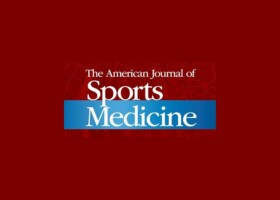
Authors:
Justin J Mitchell, Brent T Warner, Marilee P Horan, M Brett Raynor, Travis J Menge, Joshua A Greenspoon, Peter J Millett
Abstract:
Glenohumeral osteoarthritis (GHOA) is a common cause of shoulder dysfunction and disability, typically characterized by symptoms of pain, weakness, and decreased range of motion. Initial management consists of nonsurgical modalities such as lifestyle and occupational modifications, physical therapy, nonnarcotic pain relievers, and intra-articular injections of steroid or viscosupplement. When these treatments are unsuccessful, surgical options are considered. In elderly or low-demand patients, treatment with total shoulder arthroplasty (TSA) reliably produces excellent clinical outcomes with low revision rates and high patient satisfaction. However, treatment of GHOA in young or highly active patients represents a substantial challenge.
Many surgical approaches for GHOA have been described, including open and arthroscopic debridement, hemiarthroplasty, unipolar or bipolar resurfacing, non-prosthetic or biologic interposition arthroplasty, and TSA. While it has been shown that TSA provides the most reliable outcomes for patients with advanced GHOA, alternative treatments are often sought in younger and more active patients. This may be due to a number of factors, ranging from personal preference to concerns about implant longevity or unwillingness to decrease activity levels postoperatively. Furthermore, several studies have shown unacceptable outcomes of TSA in younger patients, including increased rates of component loosening, decreased component survival, and significantly higher risk of revision. A recent Markov decision analysis found that arthroscopic management of GHOA was the preferred treatment strategy for patients younger than 47 years, while TSA was preferred for patients older than 66 years.
In light of these findings, the senior surgeon (P.J.M.) has developed a joint-preserving arthroscopic strategy termed comprehensive arthroscopic management (CAM) for the treatment of young, active patients with symptomatic GHOA. This procedure addresses many of the potential sources of pain and dysfunction in the osteoarthritic shoulder through a combination of glenohumeral chondroplasty; extensive capsular release; and, when indicated, humeral osteoplasty, osteophyte excision, axillary nerve neurolysis, subacromial decompression, loose body removal, microfracture, and biceps tenodesis. In a previously published article on the first 29 patients (30 shoulders) to receive the CAM procedure, patients were found to have a significant reduction in pain and improved range of motion with increased functional outcome scores. Furthermore, the procedure demonstrated 85% survivorship at 2 years. Glenohumeral joint space of less than 2 mm was found to be predictive of progression to TSA. Midterm results in a similar group of patients also demonstrated encouraging findings with 77% survivorship at a minimum 5-year follow-up, with successful patients noting significant improvements in pain, range of motion, and function.
The promising short- and midterm results suggest that the CAM procedure is effective in managing GHOA and delaying the need for TSA in young, active individuals who wish to extend the life span of their native shoulder joint. However, the data are limited by the small sample size and inability to provide surgeons with definitive preoperative patient selection criteria. Despite this, the data do imply that some patients may be more appropriate candidates for this procedure than others, and despite encouraging preliminary results, identifying the factors that are predictive of early failure is paramount for proper patient selection for those who will do well with joint preservation versus replacement. Differentiating those patients who are less ideal candidates for arthroscopic intervention may also lead to improved long-term results by avoiding multiple surgical interventions. Therefore, the purpose of this study is to examine prognostic factors predictive of early failure in patients undergoing the CAM procedure for GHOA. We hypothesized that radiographic joint space narrowing and lower preoperative patient-reported scores would be predictive of early failure of the CAM procedure. Results from this analysis will assist surgeons in selecting proper candidates for this joint-preserving intervention to optimize durability and long-term outcomes.
For the complete study: Comprehensive Arthroscopic Management of Glenohumeral Osteoarthritis: Preoperative Factors Predictive of Treatment Failure
